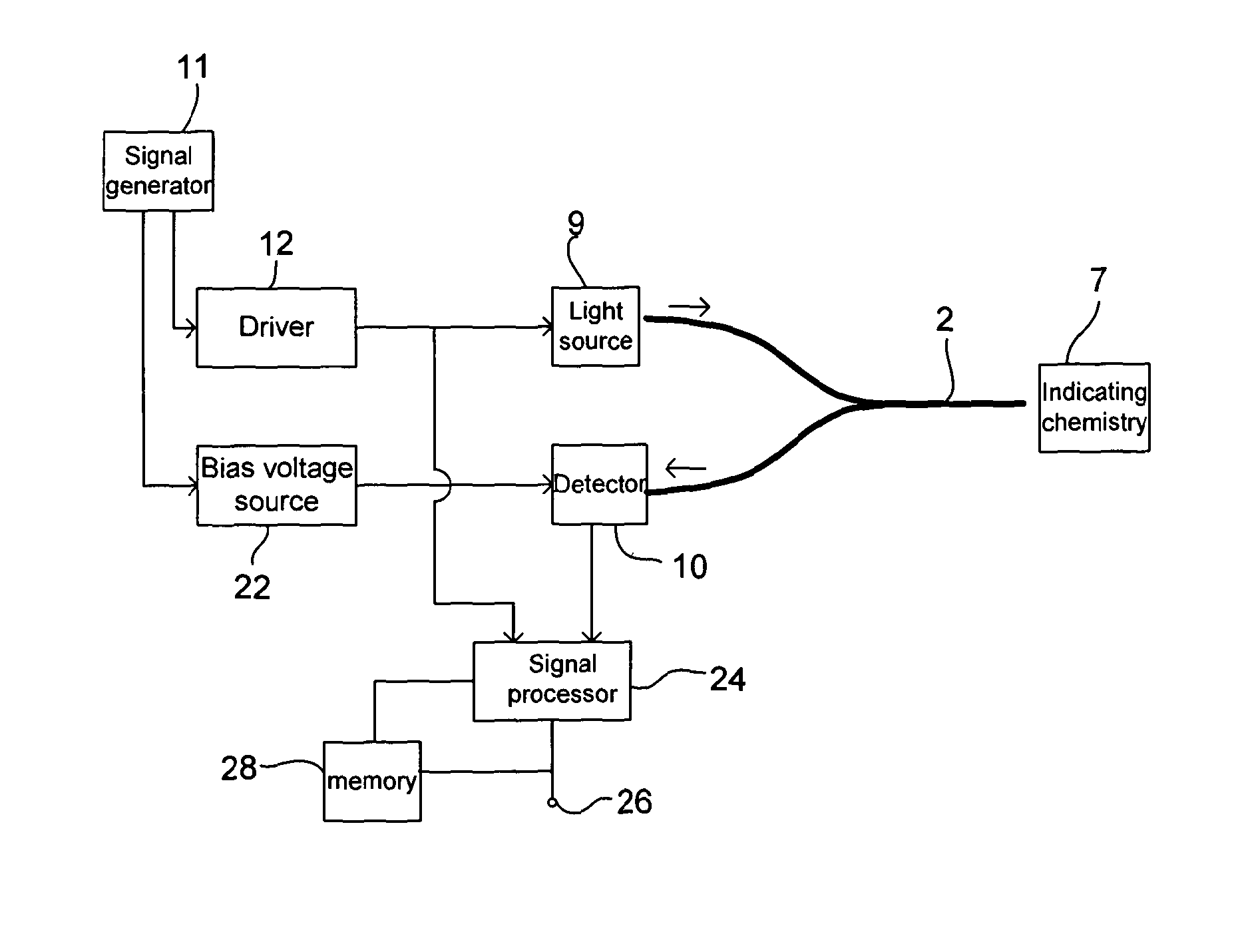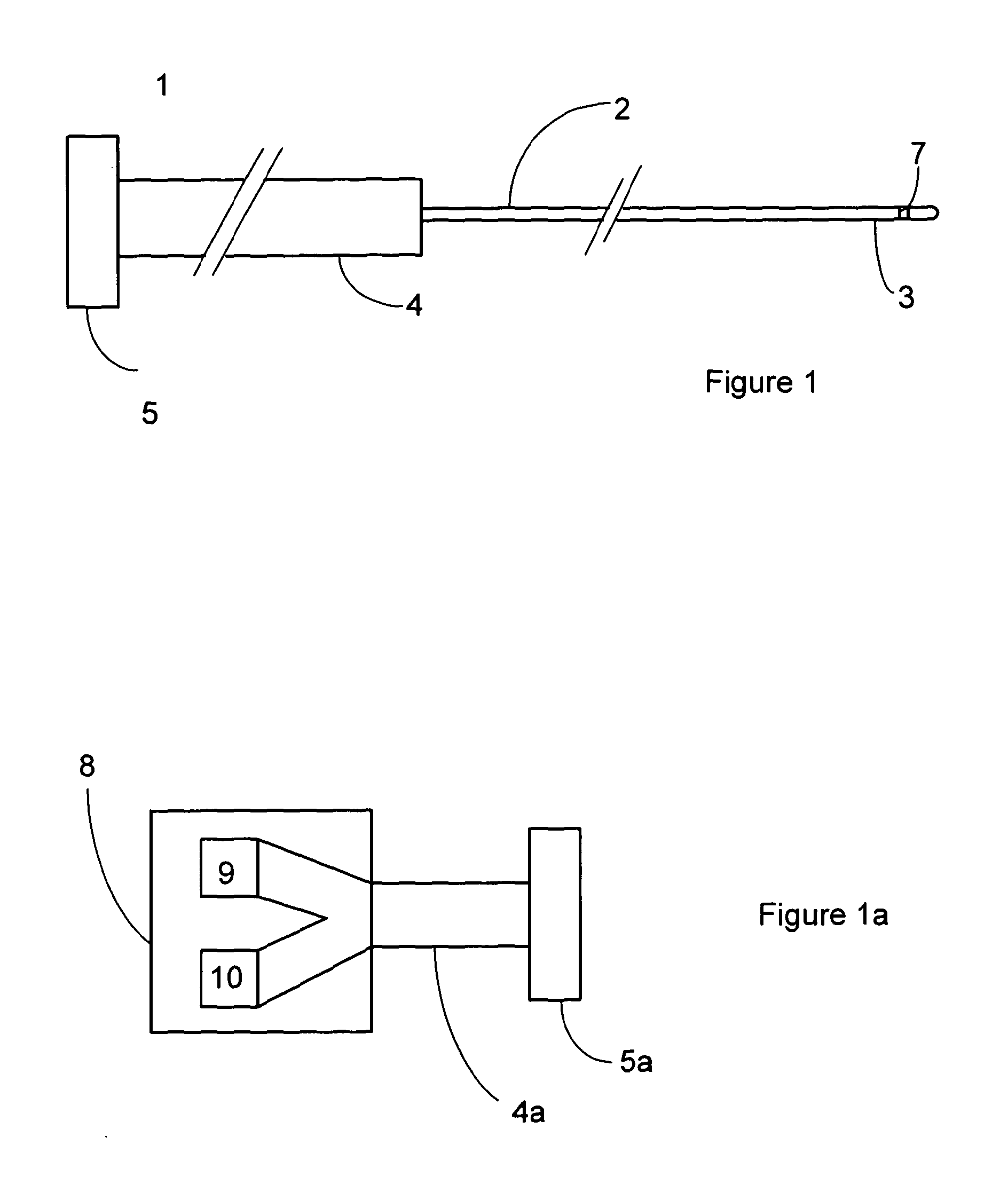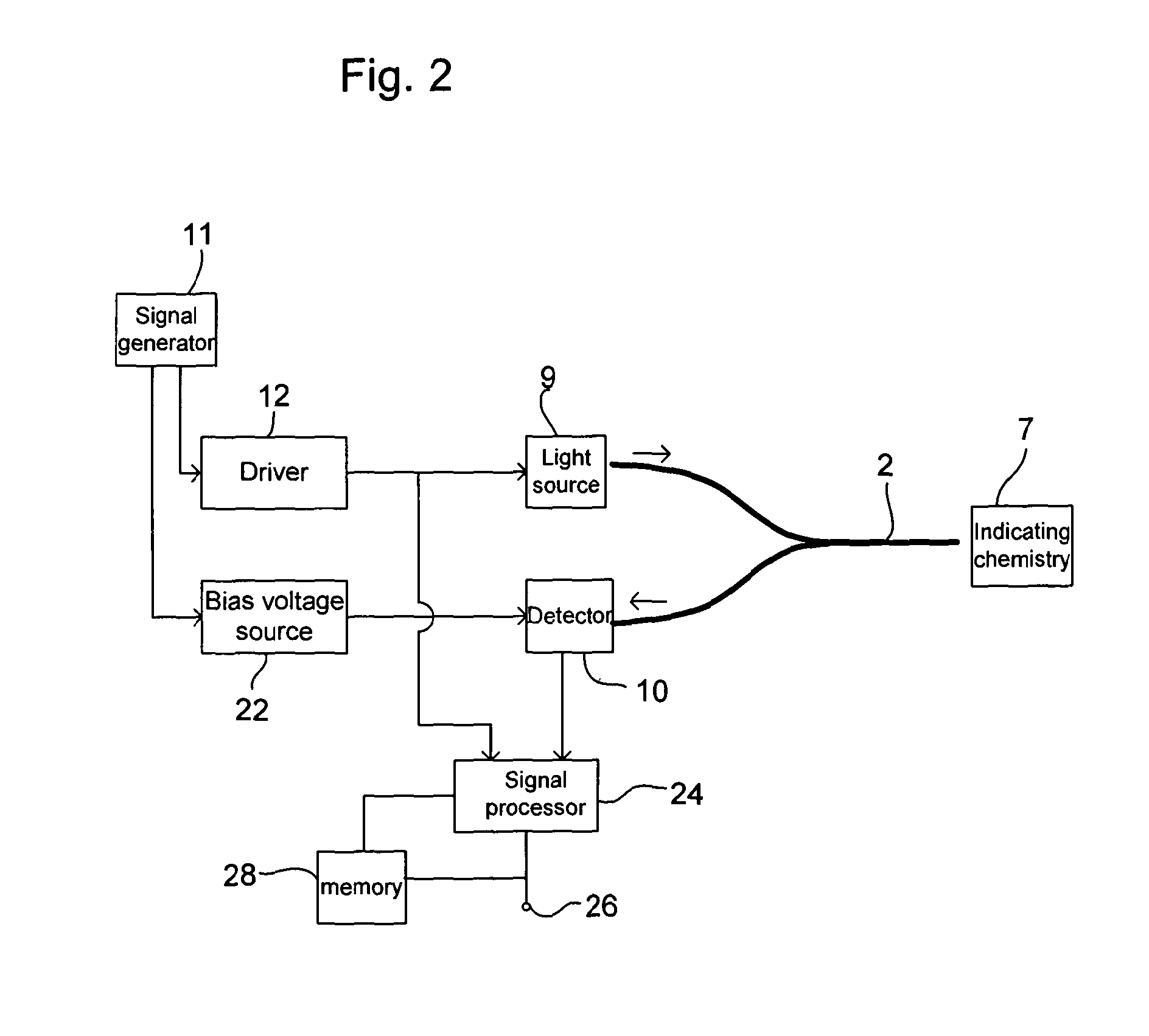Intravascular glucose sensor
a glucose sensor and intravascular technology, applied in the field of intravascular glucose measurement, can solve the problems of insufficient accuracy, high cost and bulky instrumentation, and the use of such long lifetime fluorophores for measuring glucose, etc., to achieve small size, facilitate the use of small, and facilitate the effect of small siz
- Summary
- Abstract
- Description
- Claims
- Application Information
AI Technical Summary
Benefits of technology
Problems solved by technology
Method used
Image
Examples
Embodiment Construction
[0030]As used herein the term alkyl or alkylene is a linear or branched alkyl group or moiety. An alkylene moiety may, for example, contain from 1 to 15 carbon atoms such as a C1-12 alkylene moiety, C1-6 alkylene moiety or a C1-4 alkylene moiety, e.g. methylene, ethylene, n-propylene, i-propylene, n-butylene, i-butylene and t-butylene. C1-4 alkyl is typically methyl, ethyl, n-propyl, i-propyl, n-butyl or t-butyl. For the avoidance of doubt, where two alkyl groups or alkylene moieties are present, the alkyl groups or alkylene moieties may be the same or different.
[0031]An alkyl group or alkylene moiety may be unsubstituted or substituted, for example it may carry one, two or three substituents selected from halogen, hydroxyl, amine, (C1-4 alkyl) amine, di(C1-4 alkyl) amine and C1-4 alkoxy. Preferably an alkyl group or alkylene moiety is unsubstituted.
[0032]As used herein the term aryl or arylene refers to C6-14 aryl groups or moieties which may be mono-or polycyclic, such as phenyl, ...
PUM
 Login to View More
Login to View More Abstract
Description
Claims
Application Information
 Login to View More
Login to View More - R&D
- Intellectual Property
- Life Sciences
- Materials
- Tech Scout
- Unparalleled Data Quality
- Higher Quality Content
- 60% Fewer Hallucinations
Browse by: Latest US Patents, China's latest patents, Technical Efficacy Thesaurus, Application Domain, Technology Topic, Popular Technical Reports.
© 2025 PatSnap. All rights reserved.Legal|Privacy policy|Modern Slavery Act Transparency Statement|Sitemap|About US| Contact US: help@patsnap.com



